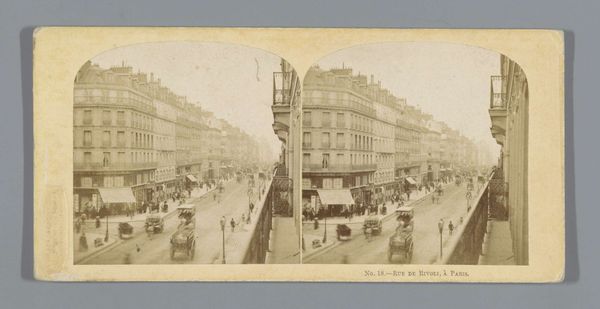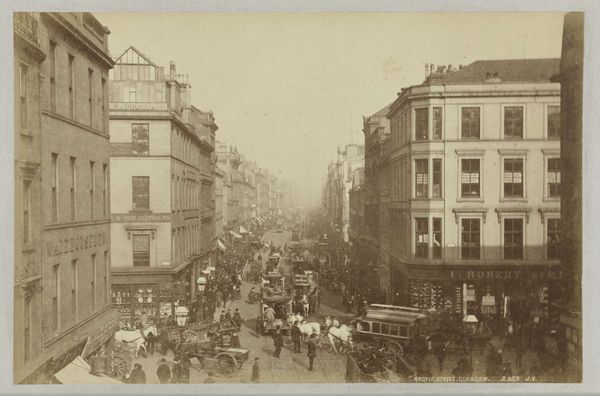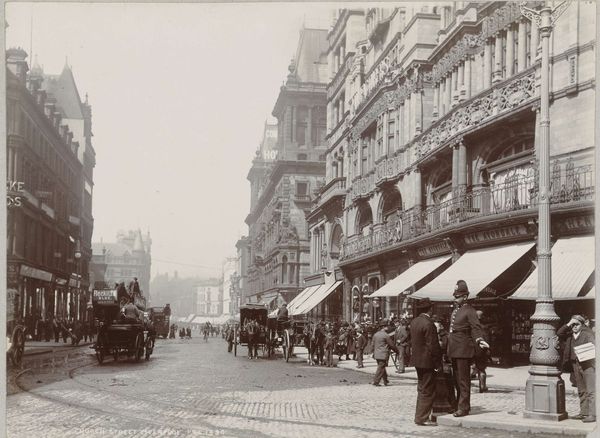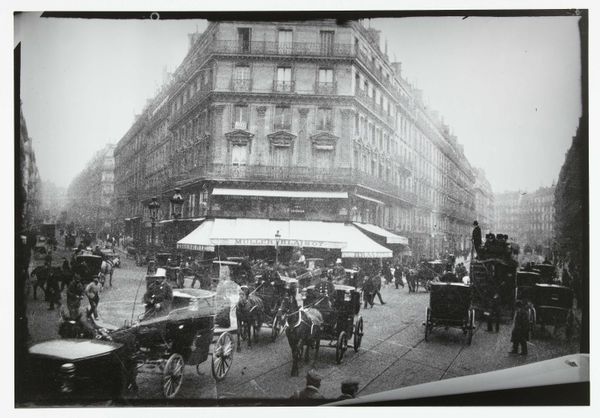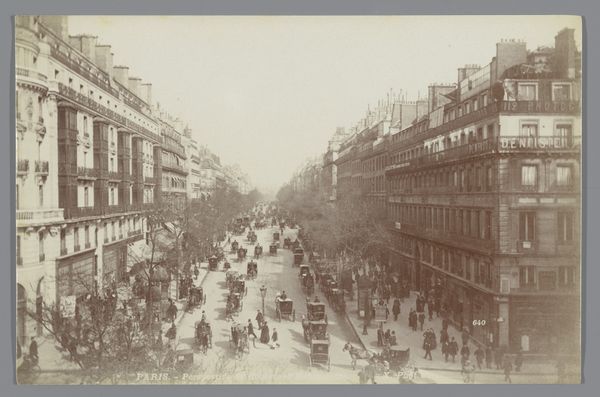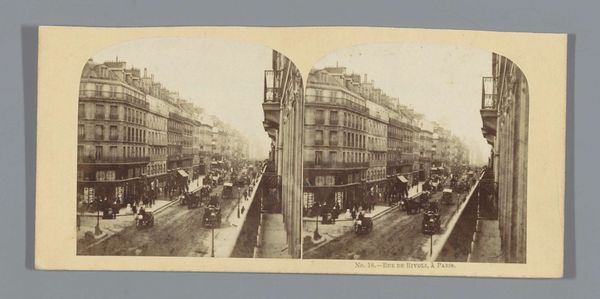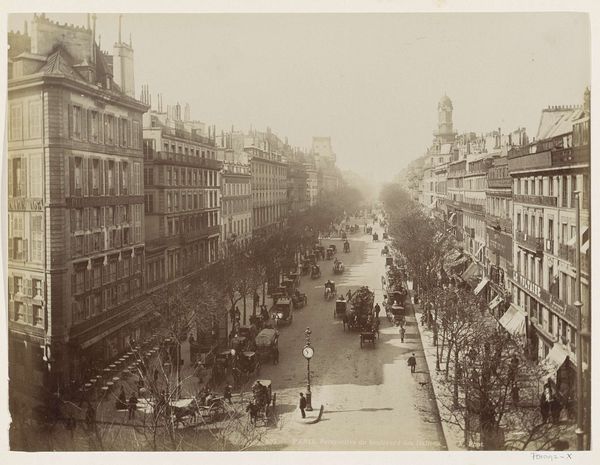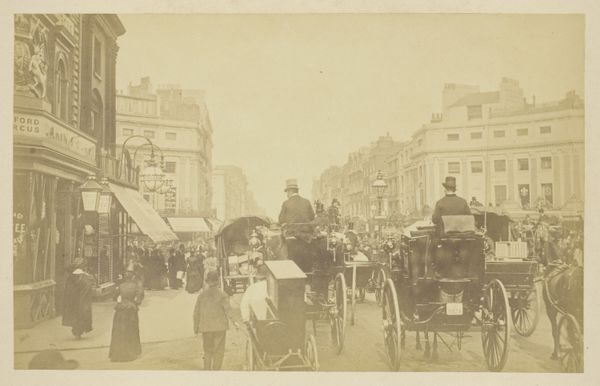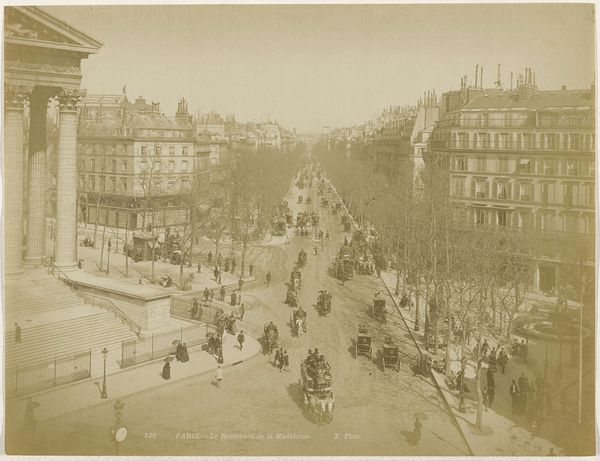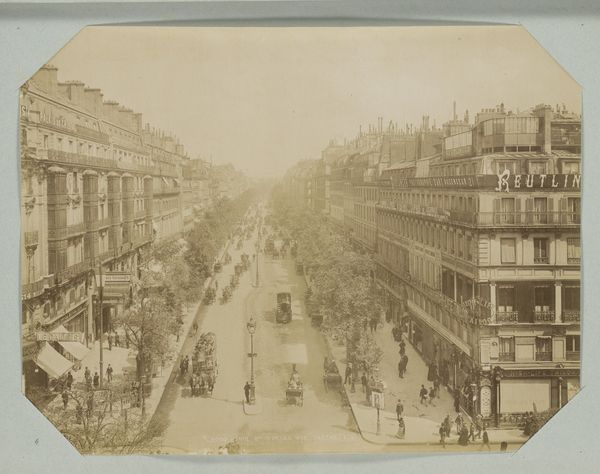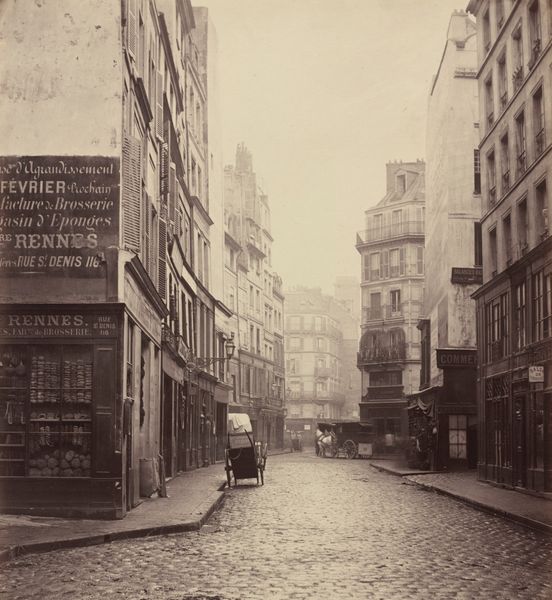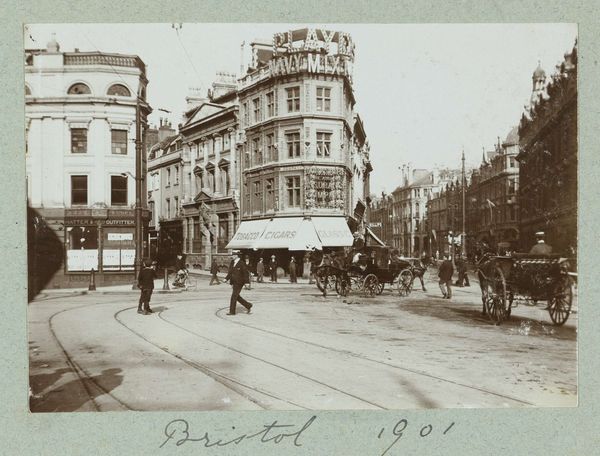
Met hout en vaartuig beladen handkarren in een straat tijdens de overstroming van Parijs 1910 - 1911
0:00
0:00
photography
#
17_20th-century
#
pictorialism
#
street-photography
#
photography
#
historical photography
#
cityscape
#
realism
Dimensions: height 52 mm, width 60 mm
Copyright: Rijks Museum: Open Domain
Curator: Oh, this photograph, taken between 1910 and 1911 by G. Dangereux, is called "Met hout en vaartuig beladen handkarren in een straat tijdens de overstroming van Parijs"—or, "Handcarts loaded with wood and vessels in a street during the Paris flood." What leaps out at you? Editor: Gloom. A kind of muted grayness. The whole scene is soaked—you can almost feel the dampness seeping from the cobblestones. It feels melancholic, like a forgotten dream. Curator: Indeed. The mood is palpable, enhanced perhaps by the tonal qualities characteristic of pictorialism, a style emphasizing aesthetic effect over sharp realism. Pictorialism often sought to evoke emotions—a yearning for the past or an appreciation of beauty amidst ordinary life. Water, as we know, is a complex symbol: it can mean purification, destruction, transition, or even the unconscious. Here, flooding dominates the physical and emotional landscape. Editor: And those handcarts… they’re so laden. What’s being salvaged? The image speaks to resilience. You see the weight these figures pull. Also, you pointed out it's from the pictorialism era; look at that softness. It lends everything this ephemeral, ghost-like quality. It's a moment caught but also slipping away, don't you think? Curator: Absolutely. The photograph freezes a fleeting historical moment while the flooded city carries echoes of past tribulations and intimates future uncertainties. Notice how Dangereux positioned the camera to include tramlines cutting through the inundated streets—emphasizing urbanity, yes, but perhaps also implying imposed order over natural chaos. Think of how many mythologies hinge on devastating floods. What human instinct asks of us. We find ourselves struggling against great tides and then trying to reclaim some semblance of our home life afterwards. Editor: It really invites contemplation. Not just on what it was like then, but about our own fragile existence. I was almost tricked by it, thinking about something tragic—the beauty in it saves the picture in a very redemptive way. Curator: A thoughtful reflection on impermanence. And a perfect segue for our next exhibit piece. Editor: Agreed. Definitely time to move on. Thank you for the history—see how beautifully such scenes repeat over the long haul of time.
Comments
No comments
Be the first to comment and join the conversation on the ultimate creative platform.

